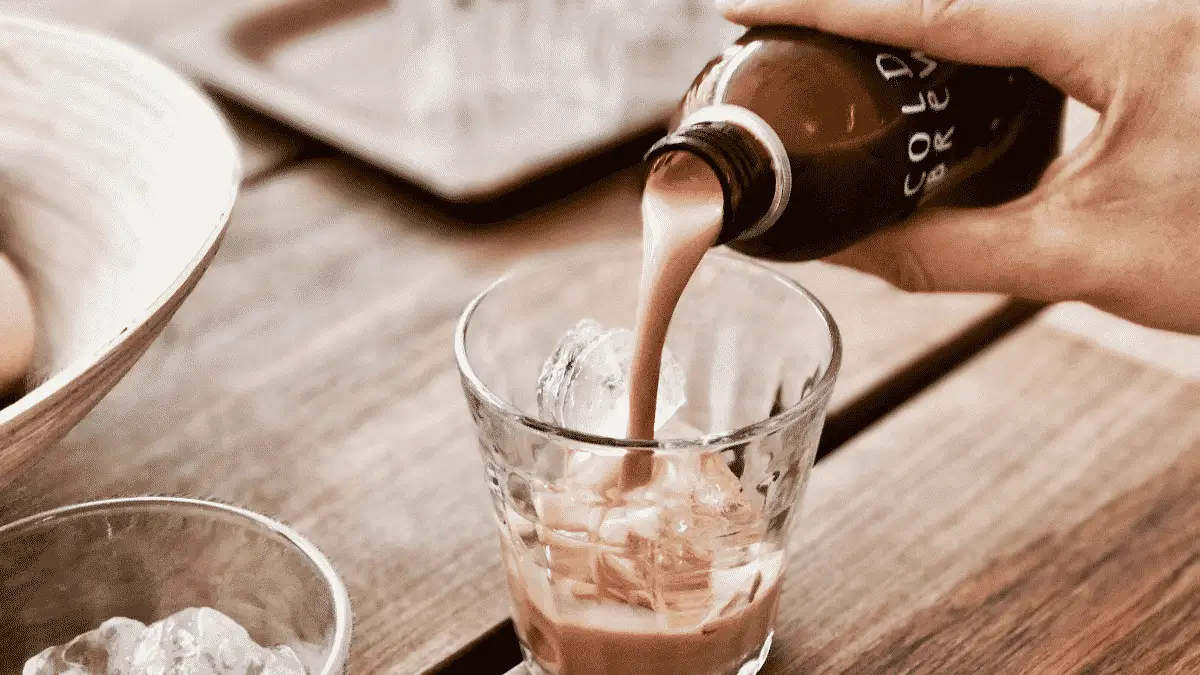Cold brew coffee, that simple-to-make summer savior, has gained increasing popularity in recent years. Traditionally brewed by steeping coarsely ground coffee in water for up to 24 hours, you can enjoy cold brew coffee in various ways. Poured over ice, warmed up, or – if you’re like me – with a dash or two of milk.
So, for us, cold brew enthusiasts who like their caffeine hit with a milky splash, is it possible to cold brew coffee with milk instead of water? In short: absolutely! By swapping water for milk in your cold brew, you will end up with a creamier, nuttier coffee.
While the basics of cold brewing still apply when brewing with milk instead of water, there are a few things you’ll need to keep in mind. Key factors such as brewing time and temperature control will undergo a tweak or two when making cold brew coffee with milk.
What’s the difference between brewing with milk and brewing with water?
The key difference between cold brewing in milk and cold brewing in water comes from the very nature of the milk itself. Unlike water, milk contains fat, which is far more adept at breaking down the hydrophobic parts of the ground coffee, mainly the oils and bitter notes.
As such, your brewing time will be much shorter than a traditional cold brew. If you leave your milk-based cold brew for too long, the oils and bitter notes will be overpowering and render your coffee undrinkable.
One crucial thing to understand when cold brewing with milk is that it will be much stronger and far more concentrated than your typical iced latte. This is actually something water-based and the milk-based cold brew has in common.
As when you brew with water, cold brewing with milk will result in a coffee concentrate that needs to be diluted before drinking. If you make your cold brew using the ratio of one pound of ground coffee to one gallon of liquid, you should dilute your end product by about half, depending on taste.
Another thing that the water and milk methods of cold brewing have in common is the need for trial and error. Whether you’re an old hand or complete novice, the perfect cold brew requires time, patience, and the willingness to sip through one or two bitter batches!
How do I cold brew coffee with milk?
For those familiar with the basic cold brew method, cold brewing with milk remains very much the same. You may need to alter the way you steep your ground coffee, and you’ll need to monitor timing and temperature closely, but otherwise, the process is nearly identical.
Grind
As always, begin by grinding your beans. The golden rule is to keep the grind fairly coarse; too fine, and you’ll have difficulty straining your coffee at the end, and you’ll also run the risk of ending up with a bitter, over-extracted brew. The same grind you would use for French press coffee is a good guide here.
As with traditional cold brew, a ratio of one pound of ground coffee to one gallon of milk gives you a sound starting point. Just scale these numbers and quantities up or down depending on how much cold brew you want to make.
Pour over
This is where the milk method makes a slight deviation from the traditional cold brew process. Pour half your milk into a large mason jar or French press, add your coarsely ground coffee, and then add the remaining milk. Stir it up with a long-handled spoon or a chopstick.
This particular technique ensures that the milk, which is more viscous than water, is fully absorbed by the coffee.
Brew
As any good cold brewer will tell you, most magic takes place in the brewing stage. As we are brewing with milk, you will need to keep your cold brew refrigerated. It is possible to leave your coffee at room temperature when brewing with water, but that is not advised in this case for obvious reasons!
The length of the brewing phase here is probably the most crucial difference from a traditional cold brew. As mentioned earlier, milk is better at breaking down the bitter parts of coffee, so your brew will be too bitter if you steep for too long.
On the flip side, a cold brew made with milk can sometimes lack a water-based cold brew’s iconic intensity. You’ll want to brew for just long enough that your coffee still packs a punch – a brew phase of 8-10 hours is advised.
Filter
Once your coffee has finished brewing, it’s time to filter.
A paper coffee filter placed inside a fine sieve is a handy, no-fuss way to filter the coffee grounds from your cold brew. Place the sieve over a pitcher and pour your coffee straight from the mason jar or French press into the sieve. You might need to let it rest over the pitcher until the last of your cold brew drips through.
Drink up!
Dilute your cold brew with water or milk, served over ice. If you’ve nailed the ratios and the timing, you should have a creamy, nutty cup of coffee. If not, this is where the trial and error phase kicks in!
Whether you test out different ratios of coffee to milk or change the length of your brew phase, you can continually refine your cold brew until it enters the Goldilocks zone and becomes just right.
What does cold brew with milk taste like?
Slightly less intense than traditional cold brew, a cold brew made with milk is creamy and caramel-colored and tends to hold slightly nuttier notes.
While it may lack the robustness of water-based cold brew, a cold brew made with milk is sure to be a hit with anyone who likes their coffee on the creamier side, and is a fun way to shake up your morning brew!

